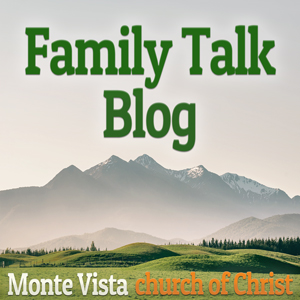The Hebrew writer makes it clear that we may use the writings of the Old Testament to improve our understanding of the New Testament teachings. The tabernacle was a “likeness” of something, a “copy and shadow” of heavenly things (Hebrews 8:5), and therefore, had special meaning to the Hebrew nation. As a type, it was a “pattern of things to come” (see Hebrews 9-10). In reading our Bibles, if we begin in Genesis and continue through to Revelation just to read scripture, we might miss the suggestions and, often, plain statements that the Old Testament is telling us something about our present worship and future home with God. But if we study the words of Hebrews 8 and 9, they will force us to return to Exodus, Leviticus, and Numbers to learn what the Tabernacle can show us about the Heavenly things. As we continue our study, focusing on the lampstand, it must be noted that some translations call this a candlestick. That is not true. It is correctly identified in scripture as a Lampstand holding seven lamps.
At the time God created the heavens and earth, He said, “Let there be light;” and there was light” (Genesis 1:3). From the beginning, God made light to be with Him throughout time. In His revelation of Himself to people, He has always been in one of several forms of light. Knowledge of Him is light, as Paul reminds us, “For it is the God who commanded light to shine out of darkness, who has shone in our hearts to give the light of the knowledge of the glory of God in the face of Jesus Christ (2 Corinthians 4:6). As a physical type of God’s eternal Spirit and God’s shining glory, the Tabernacle needed a source of light that was all-powerful in its ability to shine in all portions of the Holy Place. That light was given by a solid gold Lampstand supporting seven gold lamp bowls (Exodus 25:31-39, 37:17-24; Leviticus 23:3-4).
The placement of the lamps on the Lampstand was important as God directed the High Priest through Moses. “Speak to Aaron, and say to him, ‘When you arrange the lamps, the seven lamps shall give light in front of the lampstand.’ ” And Aaron did so; he arranged the lamps to face toward the front of the lampstand, as the LORD commanded Moses. Now this workmanship of the lampstand was hammered gold; from its shaft to its flowers it was hammered work. According to the pattern which the LORD had shown Moses, so he made the lampstand” (Numbers 8:2-4). The light had to be directed “to the front,” which would give illumination to those items being served by the priests. Jesus is described as “The Word of God and The Light of men that shines in the darkness” (John 1:1-5), removes the ignorance of people. Jesus directed His apostles that “repentance and remission of sins should be preached in His name to all nations, beginning at Jerusalem” (Luke 24:47). Further instructions sent them to all Judea and Samaria, and to the end of the earth” (Acts 1:8).
Some see the lampstand of pure gold as a type of Christ, the true Light of the world (John 8:12). Others prefer to view it as picturing the Holy Spirit, whose mission is to glorify Christ since it illuminates all that speaks of Christ in the holy place. Others see it as typifying Christ in union with believers. The middle shaft is unique because the other six branches come out, three on each side, all part of a single amount of gold. According to scripture, the lit lamps symbolize God’s Word (Psalm 105; Psalm 119; 2 Peter 1:19) or God’s guidance (2 Samuel 22:29; Psalm 18:28).
The point is not that the Lampstand and lamps were a single type of Christ’s message to the world but that God’s instructions concerning light had reason and direction in everything. The world without light could not sustain life. A workplace without light is dangerous. A person without the light of God’s word is without hope and comfort in the world. And the spirit within people is lost without the light of God to direct their path (Psalm 119:105). The glow from the Lamps on the Lampstand allowed the priests to offer incense on the Golden Altar and serve the Shewbread on the Golden Table with clarity and understanding. God’s Word, the text of our Bible, gives us the illumination and understanding to serve God as He commands us. “For you were once darkness, but now you are light in the Lord. Walk as children of light” (Ephesians 5:8).
The figures worked into the Gold of the Lampstand were almond blossoms, flowers, and knops (representing ripe almonds), which, like Aaron’s rod that budded (Numbers 17:8), depicts life from birth to maturity. The entire stand shows the life-giving nature of the light from God, as the Word given through prophets became life in Christ. That life in Christ spread throughout the world as the light of the seven Lamps spread throughout the Tabernacle’s Holy Place. As a servant of God in Christ, a member of a Holy Priesthood (1 Peter 2:5, 9), we are charged to “walk in the light as He is in the light” (1 John 1:5-10).
Are we using God’s word to grow toward maturity, looking for His return?
